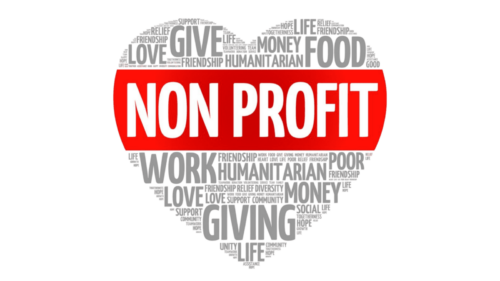

The world is always in need of a helping hand, and many nonprofit organizations are doing important work to improve their community. And one of the main tasks for such foundations is to get the message right. This is primarily done through the logo, as it is what helps a person form a first impression. Well-designed and eye-catching charity logos are the first step to making your nonprofit stand out from the crowd and connect with funders and supporters. Today we want to talk about the basic principles of logo design for such organizations, and set the main accents, supporting them with live examples of the most influential and reputable foundations.
Often, the importance of logo and corporate identity for a brand is underestimated. However, they are placed on all business and advertising printing, they are associated with the company and products. How well the concept of corporate identity is constructed affects how the brand is perceived in society. In the case of nonprofit organizations, however, a logo is much more than that; it is a powerful tool that can communicate your mission, values, and identity to your target audience, donors, and partners. Such organizations need an attractive and memorable image to communicate with the target audience – after all, their donations are the basis for the functioning of the fund and the implementation of assistance.
As in everything aimed at the result, the design of logos of charitable foundations has its laws. After all, it is not just a picture, but a business card of the foundation, which is used as the main graphic element in promotional materials to attract the attention of partners and maintain the unity of style.
So, the recipe for the perfect logo for a nonprofit organization consists of:


How do we achieve this?
The logo of a non-profit organization is first and foremost a promise that the organization makes to its audience. A promise to faithfully follow its main mission, to help. Most charitable foundations conduct their activities related to the social sphere of life and solve problems that require the attention of a wide audience, urgent solutions, and monetary collections. This suggests that in addition to the classic approach to logo design, psychology should be taken into account. Compared to the commercial sphere of activity in the social sphere, a more delicate approach and more “talking” symbols are used to attract attention.
The basis of the emblem for such organizations should be an image that promotes feelings such as kindness and mercy. These are all possible hearts (by the way, according to the results of numerous studies it turned out that the Heart is the most frequently used form for NPO logos), butterflies (symbol of development), flowers (most often associated with sympathy and care), the sun (the main graphic symbol of warmth) and much more. If you follow the direction of the activity, you can use animal symbols or sports attributes.
Of course, when developing an emblem for non-profit organizations is very difficult to remain unique. Most images and symbols echo those already created, as many NPOs have similar activities. In such cases, many organizations add additional graphic references to their logos, relating, for example, to the region of operation.
A properly designed logo is intended to work for a positive image of an NPO and perform such basic functions as:
For organizations where profit is not the primary goal, creating a logo will help communicate their goals and beliefs to others, and maybe even encourage them to ask for help and support. These logos are meant to inspire trust, empathy, and a call to action.
The logo doesn’t have to be too convoluted and complicated with tons of details. They are all made simple, bright, and clear. Such logos look good in any format. Let’s have a look at the most famous, and therefore the most successful examples.
Feeding America. A perfect translation of the idea behind the foundation and its mission, conveyed in simple elements – two “I’s” merged into a single spike – and a warm color scheme. It’s as simple and effective as possible here.
International Red Cross. Designed as an inversion of the Swiss flag in 1864, the Red Cross is a symbol of protection, and international law protects all who wear it, as well as the buildings and transportation on which it appears. An extremely simple and easily recognizable logo.
WWF. The World Wildlife Fund has one of the most recognizable logos in the world. The iconic giant panda logo was drawn in 1961 – it was done by WWF founder, artist, and naturalist Sir Peter Scott. Over the years, the design has been refined and simplified.
Boys & Girls Clubs of America. A case where abstract shapes and strong clear lines form a cool symbol of trust, cooperation, and support. Blue lines on a white background, symbolizing a handshake, look clean and bright, and the confident black text under the emblem evokes a sense of stability and confidence.
Charities and nonprofits may not have the same design budgets as more profit-oriented companies, but they need branding involvement just as much. Often even more so; when you don’t have an actual product or service that can capture the public’s attention, strong branding and the right logo can help convey the nonprofit’s message and encourage people to get involved.
What makes these logos special is the clearer graphic communication of the organization’s goals and principles, longer names, and a completely different arsenal of printing materials used. The logo for a charitable foundation should be bright, radiating goodness and hope, because these are the main concepts for such organizations. With such a heavy semantic load and a variety of imagery embedded in it, a charity’s logo should remain visually simple and easy to understand.
A quality brand identity and logo of a non-profit organization contribute to: